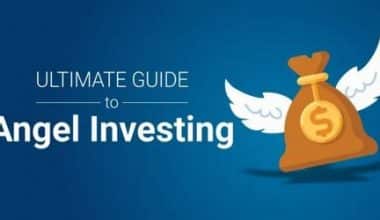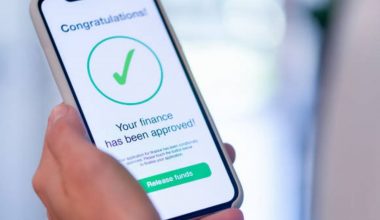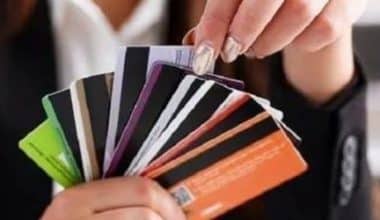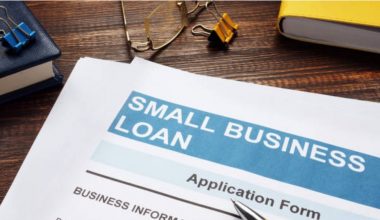Problems with credit card debt are now more likely to affect both individuals and business owners due to the current financial crisis. This is because credit cards are frequently used to pay bills and other essential expenses by people who are facing job loss, reduced income, or business closure. However, paying off high-interest balances can be challenging, even after a household’s income returns to normal. That is to say, finding the best debt relief program can help consumers regain stability more quickly and easily. Keep reading to find out more about the best government credit card relief loan.
What is Credit Card Relief?
Credit card relief refers to any effective solution that reduces the burden of paying off credit card debt. This is done with the aim of reducing or eliminating interest charges and fees to pay off the balances faster. In many cases, you may pay less each month and still get out of debt faster than you can with traditional payments.
In addition, using the best credit card relief program, a lower-interest personal loan, or a credit card to pay off high-interest credit card debt will not eliminate the amount you owe. However, it will help you pay off more of your principal balance faster. Credit card relief is also a formal agreement between you and your credit card issuer to lower the amount of debt you need to pay back. In other words, find a more efficient way to pay back what you owe that works for your finances.
Credit Card Relief Program
Credit card debt relief is a negotiation process where a debtor tries to convince a lender to accept a sum that is less than the full debt owed as repayment. Due to the recent financial crisis, economic uncertainty, and the outrageous number of people who need help with credit card debt. This leaves creditors with little choice but to negotiate credit card debt relief deals. In other words, one effective way to negotiate these deals is through the proper application of a credit card debt relief program.
Types of Credit Card Relief Programs
There are a number of different relief programs designed to help with credit card debt.
#1 Credit Counseling
A reputable credit counseling organization can give you advice on how to manage your money and debts. They counsel you to help you develop a budget, offer you free educational materials and workshops, with an effective plan to repay your debt. This is done because they are certified and trained in credit issues, money and debt management, and budgeting,
#2. Credit Card Debt Management Plan
This form of credit card debt relief often requires that you pay off the entire amount owed. The other downside is that being enrolled in a debt management plan leaves an effect on your credit rating. Hence, shutting down credit card accounts is likely to cause some damage to your credit score.
So, while this form of debt relief can directly help with credit card debt relief, it can be somewhat detrimental to your finances in other ways. In addition to this, whether a debt management plan is a good idea depends on you or your situation.
A successful debt management plan requires you to make regular, timely payments over a period of time. You might have to agree not to apply for or use any more credit until the plan is finished. In other words, this should be done after a legitimate credit counselor recommends a debt management plan and has carefully reviewed your finances.
#3. Debt Settlement
This settlement balance is often significantly less than the total credit card debt that is owed but still satisfies the payment of the debt. Hence, this form is less harmful to your credit score than bankruptcy and can offer some immediate alleviation from financial pressure.
Therefore, debt settlement programs are typically offered by for-profit companies to people with significant credit card debt. where the companies negotiate with your creditors to let you pay a “settlement,” or a lump sum of money, that’s less than what you owe.
Meanwhile, you have to set aside a specific amount of money every month in a designated account until you have enough savings to pay off any settlement that’s reached. In addition, watch out for dishonest debt settlement companies that make promises they can’t keep, charge you a lot of money, and then do little or nothing to help you.
#4. Debt Consolidation
It is a way of consolidating all of your debts into a single loan within one month. By taking out a second mortgage or a home equity line of credit. Or, you might take out a personal debt consolidation loan from a bank or finance company. Even though many people consider consolidation loans to be the worst way to get rid of credit card debt.
This is because payments may be lower, the loan will be stretched over years, and the actual amount paid for the original debt can be increased when interest is factored in. just Like a balance transfer, a personal debt consolidation loan is usually only a viable solution for consumers who have a good credit score.
#5. Bankruptcy
Bankruptcy is generally considered your last option. According to the federal courts, bankruptcy is a proceeding that “helps people who can no longer pay their debts.” By liquidating assets to pay their debts or by creating a repayment plan. Also, bankruptcy’s effect on your credit is severe so it’s essential to explore and exhaust all other options before considering bankruptcy.
#6. Forbearance Program
A forbearance program might be the best method of credit debt relief for you if your financial issue is temporary. For instance, when a major medical emergency leaves you jobless for a few months. The bank card issuer may eliminate or reduce your interest rates and stop late fees.
In essence, forbearance plans don’t actually forgive any credit card debt. Instead, they just give you a short break from making full payments. Additionally, this kind of program helps you temporarily reduce your credit card debt while helping you regain financial stability.
Credit Card Relief Loan
When bills and credit card debt become too high, many people consider debt relief loans as a possible solution. This is because credit card relief loans usually involve paying off existing debts with a new loan that offers better interest rates and more favorable payment terms. Enabling you to manage debt more easily with your existing income and expenses and giving you a chance to pay it down faster with one simplified monthly payment.
Thus, before you apply for a loan or credit card to consolidate your debt, consider your options to decide which type of debt consolidation makes the most sense. Get prequalified with at least three lenders to view potential loan costs and compare your options. Doing so however will enable you to make an informed decision and meet your debt payoff goals faster, and save money.
Best Credit Card Relief Loan Companies
To assist you in your search, I have a list of companies based on the categories most important to borrowers, such as APR, repayment terms, and eligibility criteria. Many of these lenders also let you prequalify online, meaning you can check your rates with no impact on your credit score.
- Best for low rates: LightStream
- Best for long repayment terms: LightStream, SoFi Bank, and Wells Fargo Bank
- Best for high loan amounts: SoFi Bank and Wells Fargo Bank
- Best for quick funding: Best Egg and Achieve
- Best for small loan amounts: Upgrade and Upstart
- Best for no origination fee: LightStream and Wells Fargo Bank
- Best for low credit requirements: Avant, Happy Money, OneMain Financial, and Upstart
- Best for a peer-to-peer loan: Prosper
How to Choose an Effective Credit Card Relief Loan
The process for getting a credit card relief loan varies by lender. Still, there are a few general steps to follow to choose an effective one:
#1. Check your Credit Score
Before shopping for a consolidation loan, check your credit score to understand which lenders you may qualify for and what interest rates you should expect. Doing this early gives you time to improve your score before submitting an application.
#2.Prequalify
Some lenders allow you to prequalify for a loan without impacting your credit score. This provides insight into the interest rates and terms you may qualify for before formally applying. After that, finish the formal application process with your chosen lender. This usually involves submitting information to help the loan underwriters decide if you are an acceptable lending risk or not.
#3. Compare Lenders
Once you know which lenders you qualify for, compare their offers to find the best deal based on interest rates, fees, and repayment terms. Depending on your goals, the best option may be the lender with the lowest monthly payment, the most competitive rates, or the most convenient repayment process.
#4. Gather the Necessary Documents
In most cases, you will need to provide documentation that proves your employment, income, and bank account information. Having this information on hand can speed up your approval and funding.
#5. Await Approval
Most online personal lenders promise same-day approval, and some even offer same or next-day funding. However, loan approval can take several business days, especially if the lender requests additional documentation to verify your income or identity.
Consumer Credit Card Relief
Consumer Credit Card Relief (CCCR) is a full-service debt relief company to help you get back on your feet financially so that you can take on a path toward financial freedom. This type of credit card debt relief is a financial firm that offers debt management and consolidation, credit card debts, and credit card settlements.
Debt relief service scams target consumers with significant credit card debt by falsely promising to negotiate with their creditors to settle or otherwise reduce their repayment obligations. These operations often charge cash-strapped consumers a large up-front fee, but then fail to help them settle or lower their debts if they provide any service at all.
Where is Consumer Credit Card Relief’s Headquarters?
Consumer credit card relief is located in Oakland Park, Florida, in the United States.
Government Credit Card Relief
Government credit card relief is when people or countries make it easier to pay back the money they owe. This can mean forgiving some of the debt, changing the payment plan, or combining all the debts into one. Hence, the goal is to make paying back the debt less difficult and help people have better control of their money.
In other words, a government credit card relief program helps those in financial hardship, although not everyone in financial hardship will qualify for a government debt relief program. So, it is good to remember that government debt relief is not a solution for many debt problems, especially unsecured debt, such as credit card debt. However, it is also a good idea to know your rights and what type of help is available.
Types of Government Credit Card Relief
There are specific government credit card relief programs to help consumers in debt. it is amazing to know that the government has intervened to help in times of crisis for it people,
#1. Government Credit Card Relief for Mortgages
One of the most popular debt relief programs for mortgages was the making home affordable program. This included various foreclosure alternatives, including:
HARP Mortgage – The HARP mortgage allows underwater borrowers who lost equity in the great recession to refinance into lower interest rates and affordable payments.
HAMP Modification – The HAMP modification expired but has set the way for lenders to renegotiate government-backed loans into affordable payments. At the end of the program, lenders are expected to pick up the slack and offer their own modification programs.
#2. Government Credit Card Relief for Medical and Hardship
While there is no universal program to help with personal debt, some local programs help people in financial hardship. One of the main sources of financial hardship is due to illness and medical bills. Left with no recourse, many people use up their savings and even run out of credit card debt just to pay their medical bills and. Hence, learn about state and federal health insurance programs that may help pay bills or provide payment options. Here are some other areas where the government can offer relief:
- Paying for telephone service,
- The home energy bill
- Medical bills
- Prescription drug costs
- Welfare or Temporary Assistance for Needy Families (TANF)
#3. Government Credit Card Relief for Students
Student loans can be a heavy financial burden, making it more difficult to save money, build up a down payment for a home, or make ends meet. Currently, most student loans are federal student loans, which are often eligible for various government student debt relief programs. So, if you are struggling with your federal student loans, then you should consult your loan servicer.
#4. Members of the Civil Relief Act
If you’re an active-duty military, you could qualify for some help through the Servicemembers Civil Relief Act (SCRA). The SRCA offers some benefits and protections, such as reducing the interest rates on preexisting loans to 6% and limiting the collection activity agencies can do. Therefore, take advantage of this to reduce your interest rates when you eventually retire.
In conclusion
A credit card relief program is one option to help pay off your debt, but it could mean sacrificing your credit score, paying additional fees, and owing more in taxes. But if you’ve exhausted all other options and are still struggling, a government credit card debt relief company can help reduce the amount you owe and help you pay off your debt.
References
- DEBT RELIEF COMPANIES: Top Choices & Worst Companies in 2023
- TAX RELIEF SERVICES: What It Is, Cost and Free Tax Relief Services
- BEST DEBT RELIEF COMPANIES: Top Best Debt Relief Companies
- DEBT SETTLEMENT COMPANIES: Top Companies & Reviews
- MORTGAGE STIMULUS: Good News For Prospective Homeowners
- VARIABLE ANNUITY: Definition, Life Insurance Company, & Difference






